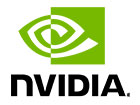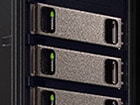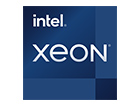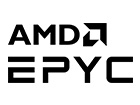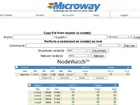With the introduction of Intel’s new Xeon E5-2600v2 processors, there are exciting new choices for HPC users. Overall, the Xeon E5-2600 series processors have provided the highest cost-effective HPC performance available to date. This new set of models builds upon that success to offer higher core counts and faster performance.
Important changes available in E5-2600v2 “Ivy Bridge” include:
- Up to 12 processor cores per socket (with options for 4-, 6-, 8- and 10-cores)
- Support for DDR3 memory speeds up to 1866MHz
- Improved PCI-Express generation 3.0 support with improved compatibility and new features: atomics, x16 non-transparent bridge & quadrupled read buffers for point-to-point transfers
- AVX has been extended to support F16C (16-bit Floating-Point conversion instructions) to accelerate data conversion between 16-bit and 32-bit floating point formats. These operations are of particular importance to graphics and image processing applications.
- Intel APIC Virtualization (APICv) provides increased virtualization performance
More for Your Dollar – Performance Uplift
With an increase in core count, increase in clock speed and increase in memory speed, HPC applications will achieve better performance. It depends upon the exact CPU model, but users should expect a 13% to 22% performance improvement for floating-point applications (model-to-model). Even greater speedups are possible with the 12-core models:
- Xeon E5-2670 transition to Xeon E5-2695v2: 32% performance improvement
- Xeon E5-2680 transition to Xeon E5-2695v2: 30% performance improvement
- Xeon E5-2690 transition to Xeon E5-2695v2: 24% performance improvement
The single exception is the Xeon E5-2620v2, which appears to offer only a 1% improvement above the E5-2620.
More for Less – Switch SKUs without a Performance Penalty
Rather than spending the same amount for more performance, some users may prefer to spend less to achieve the same performance they’re seeing today. Given the microarchitecture improvements in “Ivy Bridge”, you’re still likely to come out at least a few percent ahead.
Replacing Old Workstations, Servers & Clusters
If your computers are a few years old, you may be able to replace several with a single new computer. The AVX instruction set, introduced with the previous generation of Xeons, provides a solid 2X performance improvement by increasing the width of the math units from 128-bits to 256-bits. Combined with other improvements in Xeon E5-2600v2, you will be able to achieve the performance of older systems using just a single core from the “Ivy Bridge” architecture.
Transitioning from “Sandy Bridge” E5-2600 series Xeons
Given the increased core counts & memory speed in this latest series, lower-end Xeon E5-2600v2 processors may be swapped in for older Xeon E5-2600. Comparisons of note include:
- Xeon E5-2640 transition to Xeon E5-2630v2: same core count and clock speed; faster memory
- Xeon E5-2650 transition to Xeon E5-2640v2: identical core count, clock speed and memory speed
- Xeon E5-2660 and E5-2665 transition to Xeon E5-2650v2: same core count, but a faster clock speed
- Xeon E5-2670 transition to Xeon E5-2650v2: identical core count, clock speed but faster memory
- Xeon E5-2680 transition to Xeon E5-2670v2
Xeon E5-2690 transition to Xeon E5-2680v2
Substantial performance improvements along with useful reductions in wattage
Nearly all these processor transitions come at similar or lower costs. We often recommend customers apply the savings towards more nodes or a desired upgrade, such as additional memory and storage.
Larger Memory Bandwidth
Intel builds upon the excellent memory performance of Xeon E5-2600 series CPUs with Xeon E5-2600v2 (Ivy Bridge). Memory performance is up for every CPU sku:
- Entry-level “Basic” CPUs now support 1333MHz memory
- Mid-level “Standard” CPUs now support 1600MHz memory
- Higher-end “Advanced”, “High Core Count” & “Frequency Optimized” CPUs now support up to 4 DIMMs per socket at 1866MHz (in select configurations)
That’s a 16-20% memory performance uplift for Xeon E5-2600v2, and it’s a serious bump for memory intensive applications.
Improvements to PCI-Express generation 3.0
Although the “Sandy Bridge” architecture provided support for PCI-E gen 3, not all devices were supported. Certain network/interconnect cards and GPUs did support full-speed transfers, but a few exhibited compatibility issues. Additionally, some vendors held back their gen 3 devices until the wrinkles were smoothed out.
Now that the server “Ivy Bridge” products are launching, we can expect to see much broader adoption. This will be extremely beneficial for intensive HPC applications, as the performance boost from PCI-E gen 2 to gen 3 is typically 2X. In practice, that’s a jump from 5.6GB/s to 11.2GB/s (at the application level) for PCI-Express x16 devices.
Intel Xeon E5-2600v2 Series Specifications
| Model | Frequency | Turbo Boost | Core Count | Memory Speed | L3 Cache | QPI Speed | TDP (Watts) |
|---|---|---|---|---|---|---|---|
| E5-2697v2 | 2.70 GHz | 3.50 GHz | 12 | 1866 MHz | 30MB | 8 GT/s | 130W |
| E5-2695v2 | 2.40 GHz | 3.20 GHz | 115W | ||||
| E5-2690v2 | 3.00 GHz | 3.60 GHz | 10 | 25MB | 130W | ||
| E5-2680v2 | 2.80 GHz | 3.60 GHz | 115W | ||||
| E5-2670v2 | 2.50 GHz | 3.30 GHz | |||||
| E5-2660v2 | 2.20 GHz | 3.00 GHz | 95W | ||||
| E5-2650v2 | 2.60 GHz | 3.40 GHz | 8 | 20MB | |||
| E5-2640v2 | 2.00 GHz | 2.50 GHz | 1600 MHz | 7.2 GT/s | |||
| E5-2687Wv2 | 3.40 GHz | 4.00 GHz | 1866 MHz | 25MB | 8 GT/s | 150W | |
| E5-2667v2 | 3.30 GHz | 4.00 GHz | 130W | ||||
| E5-2630v2 | 2.60 GHz | 3.10 GHz | 6 | 1600 MHz | 15MB | 7.2 GT/s | 80W |
| E5-2620v2 | 2.10 GHz | 2.60 GHz | |||||
| E5-2643v2 | 3.50 GHz | 3.80 GHz | 1866 MHz | 25MB | 8 GT/s | 130W | |
| E5-2637v2 | 3.50 GHz | 3.80 GHz | 4 | 15MB |
HPC groups do not typically choose Intel’s “Basic” and “Low Power” models – those skus are not shown.
Conclusion
As always, please contact an HPC expert if you would like to discuss in further detail. You may also wish to review our products which leverage these new Xeon processors:
For more analysis of the Xeon E5-2600v2 processor series, please read:
In-Depth Comparison of Intel Xeon E5-2600v2 “Ivy Bridge” Processors

